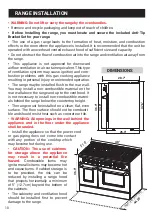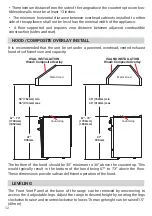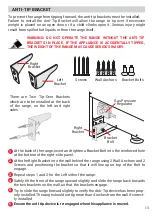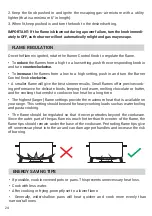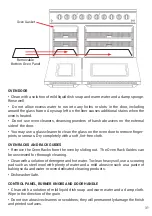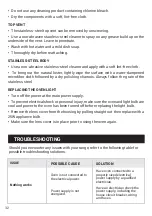
Burner Heads) of the cooktop in a mild solution of warm water and liquid dish soap.
BLY’.)
BLY’.)
COOKTOP OPERATION
BEFORE USING BURNERS
•
Select the cookware to match the burner. (Large Diameter = Large Burner, Small
Diameter = Small Burner)
•
Using oversized cookware may cause the flames to spread out and may cause
damage. The proper cookware size will also improve efficiency.
•
Cookware with a smaller diameter than the grate will not sit correctly, and this
creates a spillage hazard.
•
Only use heat-resistant cookware, marked safe for gas cooktops.
•
Thick cookware bases will give more even results, as hot spots are reduced due to
better heat distribution. Thin cookware bases will conduct heat faster but not as
evenly as thick cookware. Stir the food frequently to prevent burning.
•
Always place the cookware on the grate. The cookware must not be placed directly
on the burner.
RAPID
SEMI-RAPID
AUXILIARY
Boiling, steaming, toasting,
paellas, stir-fry
Escalopes, steaks, omelets,
frying
Steamed potatoes, fresh
vegetables, vegetable
stews, pasta
Cooking: casseroles, rice
pudding, caramel
Reheating and keeping things hot:
cooked and precooked dishes
Reheating, keeping things hot and
making casseroles
Steaming: fish,
vegetables
Rice, white
sauce, ragout
Melting: butter,
chocolate, jelly
Burner Type Very High-High Medium
Low
Defrosting and slow
cooking: vegetables, fruit
and frozen products
DOUBLE
FLAME
•
Use the following table as a guideline to which style burner is suitable for which
cooking style:
22



